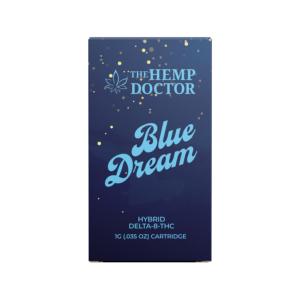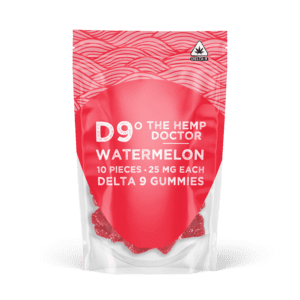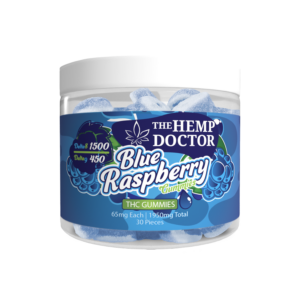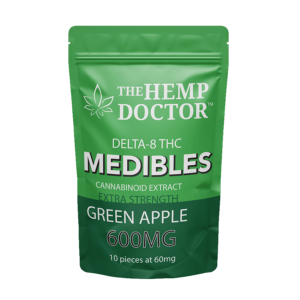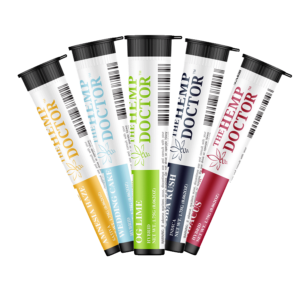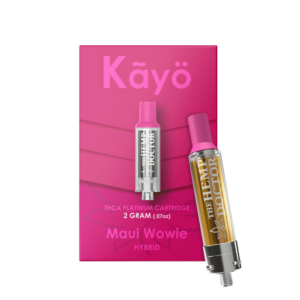When you’re just getting started with growing cannabis, one of the questions that comes to mind is, “What do cannabis seeds look like?” Whether your goal is to grow healthy, beautiful cannabis plants or avoid getting ripped off, this guide walks you through a visual guide of cannabis seeds.
Characteristics of Healthy & Viable Cannabis Seeds
Naturally, you want to know what a good, healthy cannabis seed looks like. After all, starting with a healthy cannabis seed is essential for growing a strong, potent, and resilient cannabis plant. Let’s examine the physical characteristics of healthy cannabis seeds that are viable for growing, from color to patterns:
Color & Appearance
Healthy cannabis seeds are typically dark brown, tan, or even have a slight grayish hue. They also have a subtle sheen when held under the light.
Shape & Size
Cannabis seed shape and size vary slightly per strain, but healthy seeds should generally be round or teardrop-shaped and firm to the touch. A plump seed is a good indication that the cannabis seed is ready for germination and growth.
Shell Texture
The outer shell of a healthy cannabis seed feels firm and dry. It should never be soft, brittle, or squishy. Try to lightly press on the seed; it should hold its shape and shouldn’t crack or be dented.
Pattern
Many healthy seeds display a natural “tiger stripe” or marbled pattern across their surface. While not all seeds show this, it’s generally a visual cue that the seed is mature and healthy. However, a pattern alone isn’t a guarantee. Always check the other physical factors like color and firmness.
What Do Immature or Bad Cannabis Seeds Look Like?
Spotting bad seeds (or immature ones—those not yet ready for germination) early on saves time, energy, and future disappointment. Watch out for these red flags.
Color & Appearance
Bad or immature cannabis seeds are often light in color. Think pale green, white, or off-yellow. They have a chalky, faded look, and they lack that typical glossy finish found in good cannabis seeds.
Shape & Size
Undeveloped seeds tend to be small, thin, and misshapen. If a seed looks noticeably smaller or oddly formed compared to the others, it’s likely a dud. Misshapen seeds often indicate they didn’t fully mature before harvest.
Shell Texture
Cannabis seeds with soft, cracked, or brittle shells are unlikely to survive the germination process. If it crushes easily between your fingers, it’s too weak. Softness is often a giveaway that the seed didn’t finish developing.
Pattern
Immature seeds usually have little to no visible pattern. Instead of the marbled or tiger-stripe finish common on healthy seeds, these may look plain, dull, or even slightly translucent.
To summarize, here’s a comparison table between the characteristics of good and non-viable cannabis seeds:
| Feature | Healthy & Viable Cannabis Seeds | Immature or Bad Cannabis Seeds |
| Color & Appearance | Dark brown, tan, or grayish hues with a subtle sheen under light. | Pale green, white, or off-yellow; chalky or dull with no sheen. |
| Shape & Size | Round or teardrop-shaped; plump and firm. | Small, thin, or misshapen; often looks underdeveloped. |
| Shell Texture | Hard and dry shell that resists pressure. | Soft, cracked, brittle, or easily crushed. |
| Pattern | Often displays marbled or “tiger stripe” patterns. | Little to no pattern; plain, faded, or slightly translucent surface. |
Common Types of Cannabis Seeds (Visual Cues by Category)
Did you know that you can identify the type of cannabis seeds you’re holding right now? Whether regular, feminized, or autoflowering seeds, each type has differentiating characteristics you can look out for so you can be more intentional when growing cannabis plants.
Regular Seeds
Regular cannabis seeds are the classic, unmodified version of cannabis genetics. They grow into either male or female cannabis plants. The chance is roughly 50/50.
Identifying regular seeds by appearance alone can be quite challenging because, according to the rule book, there is no clear visual distinction between regular seeds and feminized or autoflowering seeds. However, through an expert grower’s eyes, regular seeds often tend to be robust, with thick shells. They also tend to show the standard physical traits of generally healthy cannabis seeds.
Feminized Seeds
Feminized seeds are bred to eliminate the cannabis male chromosomes. These seeds grow into female cannabis plants 99% of the time. This is important as female cannabis plants produce buds while their male counterparts do not.
Feminized seeds generally look the same as regular seeds: dark, speckled, and hard-shelled. The difference lies in how they’re bred, not their appearance. This can be advanced for untrained eyes. So, if you’re not sure whether what you’re holding are feminized seeds or not, trust clearly labeled packaging from reputable seed banks.
You can’t physically differentiate a feminized seed from a male one. The difference only becomes apparent once it matures during the pre-flowering stage, with the females having white hairs and the males having pollen sacs.
Autoflowering Seeds
Autoflowering cannabis seeds are bred to flower by default after a predetermined period by the grower. These seeds combine the genetics of Cannabis ruderalis with traditional indica or sativa strains. They are usually smaller than regular or feminized seeds and appear more compact, sometimes with a lighter shell tone.
Here’s a comparison table for a quick overview of the physical traits between regular, feminized, and autoflowering cannabis seeds:
| Seed Type | Visual Traits | Notes |
| Regular Seeds | Dark, speckled, thick shell | Can grow male or female (50/50); no visual way to tell sex early. |
| Feminized Seeds | Same as regular (dark, hard, marbled) | Grow female ~99% of the time; appearance identical to regular. |
| Autoflowering Seeds | Smaller, compact, sometimes lighter in color. | It may look slightly different; flowers automatically. |
How to Test Cannabis Seed Quality?
Testing the quality of your cannabis seeds before planting helps ensure better germination rates and stronger plant development. While appearance offers initial clues, strengthen your guess about good cannabis seeds by trying these home-based quality testers:
The Squeeze Test
This is the most basic and beginner-friendly test for checking seed strength. Here’s how you would do it:
Step 1: Gently hold a seed between your thumb and forefinger.
Step 2: Apply a slight pressure that’s enough to feel resistance, but not sufficient to crush the seed.
The Result:
During the test, a healthy, mature cannabis seed will feel firm and solid. It should never be left dented or squishy.
The Float Test
While not 100% accurate, the float test can help gauge whether seeds are more likely to germinate. Follow these steps:
Step 1: Fill a glass with lukewarm water.
Step 2: Drop the seeds in and let them sit for about 1–2 hours.
The Result:
Sinking seed signals that the seed has a solid internal structure. Hence, it is viable and healthy. Floating seeds can be a sign of immaturity and internal emptiness.
Can You Identify the Type of Strain by Looking at a Seed?
Generally, no, unless you’re an experienced cannabis grower. Cannabis seeds don’t give away much about the specific strain just by looking at them. Visual traits, such as color, texture, pattern, and shape, often indicate maturity and healthiness, rather than genetic lineage.
Strain-specific traits, such as color and cannabinoid content, only reveal themselves during the flowering stage.
Most of the time, you don’t need to identify specific strains through seeds because they’re labeled by sources. It’s up to you how to keep the cannabis seeds organized and properly labeled when working on multiple strains.
What Do Seeds Look Like from Seed to Germination?
Understanding what cannabis seeds look like as they transition from dry seeds to sprouting seedlings can help you spot healthy development and troubleshoot early problems. Here’s a simple breakdown of each stage:
1. Dry Seed (Pre-Germination)
Pre-germination seeds are hard, dry, dark brown to gray with possible tiger stripes. They are smooth and firm to the touch.
2. Soaking (First 12–24 Hours)
At this moment, the seed can darken slightly while the shell absorbs moisture and may appear slightly swollen. At this stage, the seed is awakening and beginning to activate the enzymes necessary for growth.
3. Popped Shell (24–48 Hours)
A popped shell has a tiny white taproot (radicle) that begins to emerge from the cracked shell. You can let out a sigh of relief from here, as this is the first visible sign that germination is successful.
4. Early Germination (2–4 Days)
Cannabis seeds between days two and four develop a taproot that grows longer, and the seed shell may split fully. This is the time growers carefully move the germinated seed into soil or a grow medium, root-side down.
5. Sprout Emergence (5–7 Days)
The seedling begins pushing through the soil, and bright green cotyledons (baby leaves) begin to appear.
Breaking Common Misconceptions About Cannabis Seeds
Even seasoned growers can fall for myths when it comes to cannabis seeds. Let’s clear the air on a few widespread misunderstandings:
1. You Can Tell the Plant’s Gender by Looking at the Seed
You can’t visually tell if a cannabis seed will grow into a male or female plant. Gender is only revealed during the pre-flowering stage. While feminized seeds are bred to produce female plants, regular seeds leave it up to nature (about 50/50).
2. All Tiger-Striped Seeds Are Good
While tiger stripes indicate maturity, not all striped seeds are viable. Seed quality is better judged by firmness, color, and structure, not patterns.
3. Bigger Seeds Are Always Better
Seed size varies by strain. Some healthy seeds are small and still perfectly viable. Don't dismiss smaller seeds, especially from autoflowering or ruderalis-type strains.
4. Light-Colored Seeds Can Still Germinate Just Fine
Very pale or greenish seeds are typically immature and unlikely to germinate. While there are exceptions, healthy seeds are usually darker with a slight sheen.
5. All Cannabis Seeds Look the Same
Different strains (indica, sativa, ruderalis) and seed types (feminized, regular, autoflowering) can slightly differ in appearance. Experienced growers may spot subtle distinctions.
Want to Sell THCA Flower? Skip the Seeds, Browse Our THCA Flower Wholesale Catalog
Understanding what cannabis seeds look like and how to tell the good from the bad is an essential skill for any grower. From seed size and color to texture and pattern, every detail gives clues about a seed’s potential.
Growing from seed takes time, patience, and careful technique. If you don’t want to muddy your hands with cannabis cultivation and sell premium-quality hemp instead, at The Hemp Doctor Wholesale, we offer expertly cultivated THCA flower. No germination or guesswork needed.
Explore our THCA Flower collection today and elevate your cannabis experience from seed knowledge to full-spectrum satisfaction.
